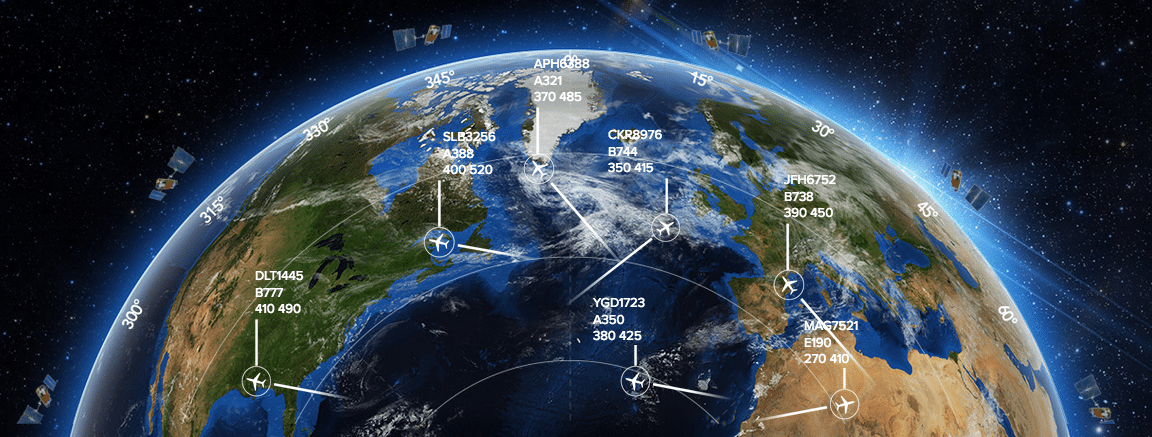 |
| Rendering of Aireon’s space-based ADS-B satellite network. Photo: Aireon |
[Avionics Magazine 12-21-2016] A new report, based on research from Purdue University’s School of Aeronautics and Astronautics, has analyzed the potential impact of space-based Automatic Dependent Surveillance-Broadcast (ADS-B) technology on global aviation carbon emissions in remote and oceanic airspace. Authored by Karen Marais, the “Environmental Benefits of Space-based ADS-B” report indicates that the implementation of this technology can offer benefits preventing approximately 14.3 million metric tons of carbon dioxide (CO2) from being released into the atmosphere between 2020 and 2030. This is equivalent to removing more than 300,000 cars from U.S. roads each of those years, while making no changes to aircraft design or fuel.
According to 2015 estimates from the International Civil Aviation Organization (ICAO), commercial aviation contributes about 2 percent of global manmade CO2 emissions annually. Significant contributors to this are oceanic and remote airspace routes, which lack radar coverage and operate under separate procedures as compared to radar-controlled airspace. That difference comes with a heavy emissions penalty. Due to lack of real-time surveillance in those regions, air traffic control separates aircraft procedurally by approximately 50 nautical miles. While procedural airspace helps manage safety-risk, it can also be inefficient. Marais found that space-based ADS-B offers a near-term solution for the aviation industry to limit fuel emissions by improving operations and efficiencies in remote and oceanic airspace. It accomplishes this by using more precise locating capabilities and enabling optimum altitudes, speeds and routes.
The report concludes that space-based ADS-B has the capability to “proactively contribute to reducing aviation’s contribution to climate change today and meet current and future CO2 reduction commitments and international agreements being considered by agencies such as the U.S. EPA [Environmental Protection Agency] and the UN ICAO.” This includes initiatives like the Carbon Offset and Reduction Scheme for International Aviation (CORSIA), established by ICAO this past Fall to reduce aviation emissions. It also supports the White House goal to reduce the United States emissions below 2005 levels, a reduction of 26 to 28 percent.
Aireon expects its space-based ADS-B service to be operational in 2018, shortly after the completion of the Iridium Next satellite constellation. The constellation will consist of 66 operational Low-Earth Orbit (LEO) satellites providing 100 percent global coverage. The service will also provide Air Navigation Service Providers (ANSPs) with global aircraft surveillance capability.